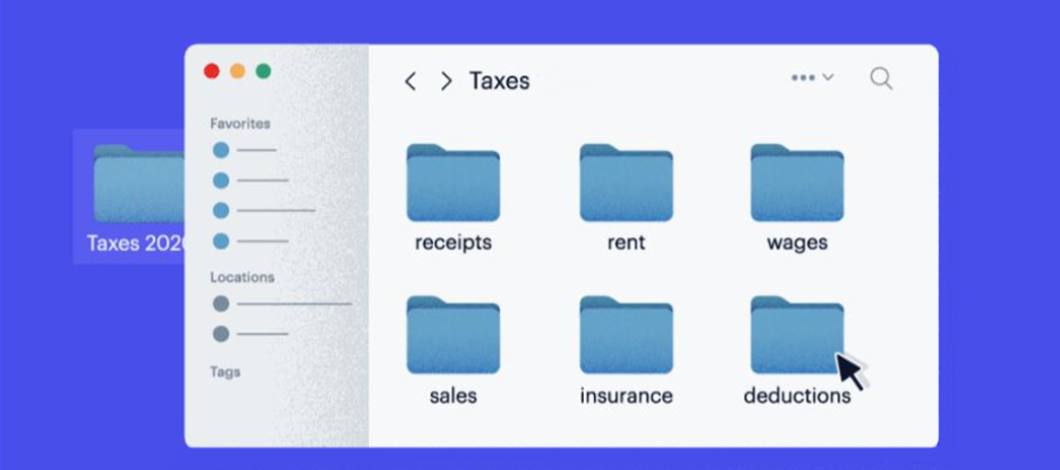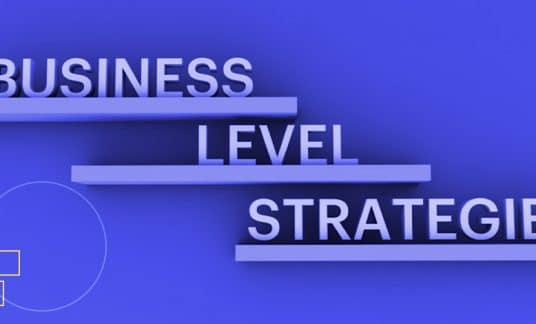It can be challenging to cut through all the noise on the internet to get noticed by your target audience.
According to Domo, more than 2.5 quintillion bytes of data are created every day, and the quantity is growing. Much of that is content aimed at reaching current and potential customers in an effort to increase sales and expand operations.
To claim your place in the digital content universe, you need to develop a comprehensive content strategy that targets your audience, showcases your products and services and delivers the results you need.
We’ll explain what content strategy is — and how to develop yours.
Content Marketing: A Brief History
There was a time when having an updated, professional-looking website was the only online tool a company needed to play in the internet sandbox. Company websites were static digital brochures, seldom changing from one year to the next unless they were amended to add a new address or product lineup.
Enter the Search Function
Then along came search, with engines such as Google, Yahoo, Bing and others looking for ways to determine which results to show users when they typed in certain keywords. As part of the criteria used to determine whether a site was up to date and useful to the user, algorithms focused on websites that uploaded fresh content often.
Quality Becomes Key
Over time, this need for ongoing fresh material gave rise to the requirement for the different types of marketing content published to be authentic and authoritative. Good quality information gave search users the most valuable results, and this, in turn, increased the usage of the search engine that provided good results. Companies began vying for better placement in the search results. Those that were the most prolific with new material automatically rose to the top of the mix.
Flash Forward: Content Is a Science
An active content marketing strategy has become a requirement for success in search, and in the past 10 years, this has developed into a science of its own. We’ll explain.
How Content Marketing Works
A vital part of every digital marketing strategy, content is the creation and distribution of materials and information aimed at attracting and engaging your target audience.
By providing non-salesy, informative content geared toward every possible stage of the customer’s buying cycle, you position your company in the customer’s mind as a potential provider of the product or service they seek.
Content Helps Build a Strong Online Presence
It may seem as if you’re giving away valuable information free of charge when you publish detailed content.
In reality, your customers are more likely to buy from someone they are familiar with — whom they trust and believe knows their business — over a company that doesn’t have a strong, authoritative, online presence.
When customers know your company understands their needs, they may seek out your products or services instead of waiting for you to approach them. This is the principle behind inbound marketing.
Finding Fresh Content to Publish
The problem with publishing fresh content on a daily, weekly or even monthly basis is that there are only so many times you can refresh your current material. To succeed with content marketing, you have to create new, quality content on a regular basis and publish it on your website. Then you have to make sure people who are looking for your products or services actually find it.
Why Your Business Needs a Content Strategy
The digital world has leveled the business playing field in many respects, not least because one no longer needs to have a huge marketing budget to compete with industry leaders. Various types of content marketing give you opportunities to reach your audience, whether local or global, for a fraction of the cost of typical marketing efforts. In fact, content marketing costs 62% less than conventional, outbound marketing, but generates 3 times the number of leads.
Your business needs a digital content strategy that will enable you to connect with and educate your prospects. It also lets you generate trust and build a relationship with customers.
Creating a Content Strategy in 10 Steps
Aim to develop a content strategy that makes use of various types of content in digital marketing.
To ensure that your plan is up-to-date, innovative and engaging for your audience, you’ll need to consider and map out your internal and external strengths, objectives, major inputs, competitors and resources.
Before you can develop a viable content strategy and plan, you’ll need to gather a substantial amount of information on which to base your decisions. This includes:
1. Audit Your Current Content
Begin with auditing your current strategy, whether you call it content, marketing or client communications. Make a comprehensive list of everything you’re doing and whether each activity is successful.
Consider which of the components you’ll want to keep and incorporate into the new content strategy — and which can be discarded because they’ve been tested and didn’t work.
2. Gather the Data You Need
A digital content strategy can’t be based on guesswork. You’ll need to collect all the data you can before you can start formulating it.
This includes information on your target audience, such as:
- Who is your ideal client? This doesn’t mean visualizing what your current clients “look” like, but who your first-choice customer would be.
- What demographic, income and geographic groups does your ideal client belong to?
- Which media formats do they typically access? This would include social media platforms, television programs, podcasts, websites and events.
- What are the most effective content types for content marketing for this audience?
- What are the needs and wants that might lead them to need your solution?
When you have a general idea of who your perfect customers are, you can write a short narrative about their persona to use in the development of your content strategy. Give your personas names, jobs, families and homes, along with some hobbies and characteristics. This will help you to personalize your material to sound as if you’re speaking directly to them.
3. Determine Your Goals and Objectives
Every strategy is based on a set of goals and objectives. To determine your content goals, you’ll need to figure out what you want to achieve, both in the short term (6 months to 24 months) and over the long term (5 years to 10 years).
For example, decide whether you want to:
- Increase awareness of your brand
- Build an email list to send marketing newsletters
- Develop a database for future lead generation and nurturing
- Build your reputation as an expert in your field
- Promote a particular product or service for a limited time
You can do all of these — and more — with content, but your goals need to be specific to enable you to focus your content correctly. It also makes measuring your results simpler.
For example, if you know you were aiming to achieve $X in new sales over a 6-month period or to develop a mailing list of 5,000 prospect emails, you’ll be able to see if you have succeeded by comparing your goal with the final result.
4. Do Keyword Research
Keyword research is a vital step in developing your content strategy and it’s more complex than simply including words about your product or service.
Search engines these days work mainly according to a semantic search, which is based on identifying the problem a user intends to solve and delivering results to meet their needs.
This means it’s important to select key terms and phrases that get a high number of searches by the right target audience.
5. Identify the Types of Content
Your research will have shown that different audience segments consume different content types that marketing practitioners publish.
Older customers, for example, might prefer written content that’s sent by email, while younger audiences are more likely to access video or podcast materials.
Analyze the customer personas you developed at the start of your content strategy process to determine which types of content marketing are best suited for each group. Typical digital content types include video, podcasts, webinars, blog posts, articles, white papers, ebooks, reports and case studies.
6. Choose Your Content Distribution Channels
Content distribution channels are the media outlets you’ll use to publish the materials you create.
There are 3 types of content marketing distribution channels: owned, earned and paid. Some of the most frequently used digital marketing channels are:
- Social media platforms, e.g., Twitter, LinkedIn, Instagram, Facebook, Snapchat and Tumblr
- Your company website’s blog or news section
- Guest blogs on other industry-related websites
- Original articles for online publications such as Forbes, Fortune and Business Insider
- Video sharing sites such as TikTok, Vimeo and YouTube. Instagram also has an active video channel, as do most of the other social networking sites.
The channels you choose will depend on your audience and resources, as well as the different types of marketing content you’re creating.
7. Build a Cohesive Content Framework
There was a time when you could write blog posts on topics that took your fancy. Those days are over.
For your content strategy to be truly effective, it needs a scientific backbone based on thoroughly researched data. The way to approach this is by developing a framework across core topic areas, which allows you to organize your content in topic clusters instead of individual, disjointed posts.
Clusters, in turn, are grouped around central pillar pages, which offer a broad overview of the subject matter and provide an anchor point for content in several topic clusters. All of these are interlinked to create an efficient information architecture while giving you deeper coverage across a range of topics.
If you sell more than one product line or service, you should ideally create a pillar page for each with relevant topic clusters linked to it.
8. Establish Resources
Developing a detailed content strategy requires you to invest time, money and effort. As part of your planning, find out the costs associated with producing the different types of marketing content you want, publishing and distributing it, sharing it on social media and evaluating its performance. This will enable you to develop a clear budget for the implementation of your strategy, and help you measure your return on investment afterward.
You also will need to determine the roles and responsibilities of each person on your team. Although content marketing is a strategy companies of any size can use, it takes people-power to actually do the work. Whether those resources are in-house employees, subcontractors or a marketing agency, you’ll need to cover the financial costs and provide oversight.
Planning out your resources is part of the content strategy template or road map that will lead you to success.
9. Select Digital Tools
One of the most exciting aspects of a digital content strategy is the abundance of software geared at streamlining the process.
Build yourself a marketing technology stack that includes applications for keyword research, automated publishing, social media aggregation, email marketing, statistical analytics and anything else you need.
10. Develop a Calendar and Timeline
Your content strategy planning should culminate with the development of a content calendar for a fixed time period.
This should pull together all your research and deliver a schedule that includes:
- The pillar pages you plan to create
- The topic clusters you want to cover in the initial strategy
- Working titles for the content marketing-type pieces in each cluster
- The keywords to use in each piece
- The channels where you’ll distribute them
- Costs and relevant publication dates
A detailed content plan will enable you to structure your workload comfortably, involve others in the process and ensure that your strategy is followed to the letter.
Benefits of a Successful Content Strategy
Quality content encourages your audience to buy from you by giving them the information they need to make an informed decision. Some of the benefits of using effective types of content in your digital marketing strategy include:
Promoting Your Brand
For your lead generation efforts to work, you need to create awareness of your brand in your target market that reinforces consumers’ positive views of your company and products.
Providing Real Value
In these days of heightened recognition of how important the customer’s experience is, everything you do (online and offline) should provide value to your audience. A content strategy allows you to create useful content, share it on social media and provide users with education, inspiration and entertainment in the process.
Improving Your SEO Rankings
Any business that can’t be found in search is leaving money on the table. To get your company found, you need to have some ranking in search engine optimization (SEO). Well-optimized, indexable content that contains the right key terms drives organic search results.
Building a Community
Most people prefer to buy from someone they know and trust. When you publish quality content with a storytelling slant, it connects people and builds a community spirit that centers around your brand.
Positioning You as an Expert
Quality information gets shared — on social media, on forums and by word of mouth. This makes you appear to be the expert on your topic, which establishes authority with your most important customers.
In Short
Content marketing is all about delivering the right message to the right person, at the right time in their buying journey.
It isn’t difficult, but it doesn’t happen without careful planning, a solid foundation and a committed approach.
You either need to put the time and effort into developing and implementing a strategy or find a marketer or agency who can do the work for you.













